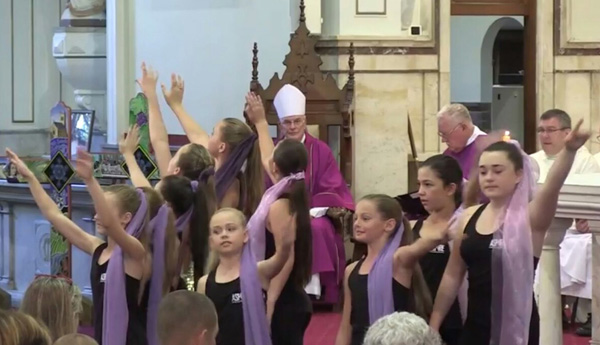 |
| Liturgical dancing group for girls, at Sacred Heart Cathedral, New Castle, Australia (May 2014). |
Dancing
is not a form of expression for the Christian liturgy.
In about the third century, there was an attempt in certain
Gnostic-Docetic
circles to introduce it into the liturgy. For these people, the
Crucifixion was
only an appearance. Before the Passion, Christ had abandoned
the body that in
any case he had never really assumed. Dancing could take the
place of the
liturgy of the Cross, because, after all, the Cross was only
an appearance.
The cultic dances of the different religions have different
purposes—incantation,
imitative magic, mystical ecstasy— none of which is
compatible with the
essential purpose of the liturgy of the “reasonable
sacrifice”. It is totally
absurd to try to make the liturgy
“attractive” by introducing dancing
pantomimes (wherever possible performed by professional dance troupes),
which
frequently (and rightly, from the professionals’ point of
view) end with
applause.
Wherever applause breaks out in the liturgy because
of some human
achievement, it is a sure sign that the essence of liturgy has totally
disappeared and been replaced by a kind of religious
entertainment. Such
attractiveness fades quickly—it cannot compete in
the market of leisure
pursuits, incorporating as it increasingly does various forms of
religious
titillation. I myself have experienced the replacing of the
penitential rite
by a dance performance, which, needless to say, received a round of
applause.
Could there be anything farther removed from true penitence? Liturgy
can only
attract people when it looks, not at itself, but at God, when it allows
him to
enter and act. Then something truly unique happens, beyond competition,
and
people have a sense that more has taken place than a recreational
activity.
None of the Christian rites includes dancing. [The Spirit of the Liturgy,
(SF, CA: Ignatius,
2000), p. 198]